The first time Marlon Brando saw Tetiaroa in the early 1960s, all he could make out was a “slender pencil of land” on the horizon in the South Pacific. Later, during a break from filming Mutiny on the Bounty, he hired a fisherman to ferry him to the atoll and realized Tetiaroa—part of the Society Islands archipelago in French Polynesia—was “more gorgeous than anything I had anticipated.” After making the roughly 30-mile journey north from Tahiti, Brando found 12 small coral islets, or motus, encircling a tranquil lagoon. Seabirds soared over thick stands of coconut trees, and sandy beaches beckoned invitingly.
“The lagoon was … infused with more shades of blue than I thought possible: turquoise, deep blue, light blue, indigo blue, cobalt blue, royal blue, robin’s egg blue, aquamarine,” Brando wrote in his autobiography, Songs My Mother Taught Me. “A shadow fell across the island briefly, then moved on, and the sun shone again like satin on the riotous colors of the lagoon. It was magical.”
Tetiaroa captivated Brando—so much so that, several years later, he bought it. The atoll was Brando’s escape from Hollywood, where he starred in films like The Godfather and A Streetcar Named Desire. But it’s also where he allowed himself to think big: The late actor wanted to make Tetiaroa a “university of the sea,” where world-renowned scientists could conduct cutting-edge research and students could learn about conservation and Polynesian culture. He also imagined Tetiaroa as a model for sustainable development and tourism.
Brando died in 2004 and never got to see his plans for Tetiaroa fully realized. But, over the last decade, his dream has become a reality: Researchers from around the world are now using Tetiaroa as a living laboratory, and schoolchildren are visiting to learn the traditional knowledge and stories of their Polynesian ancestors. The atoll is also an experimental site for innovative technologies and methods to combat climate change.
“Marlon was a visionary,” says Hinano Murphy, the cultural director for the Tetiaroa Society, the nonprofit in charge of conservation, education and research on the atoll. “He wanted to create a school of the ocean. And I think what we are doing today … we are following Marlon’s spirit.”
Looking into the past
Tetiaroa stands out against the dark blue waters of the Pacific Ocean. Michel Renaudeau / Gamma-Rapho via Getty Images/https://tf-cmsv2-smithsonianmag-media.s3.amazonaws.com/filer_public/e4/aa/e4aa31e4-bda8-4e36-9b00-5e733a9a4795/gettyimages-945308464_web.jpg)
Tetiaroa’s history dates back long before Brando. Like other atolls, it was once an active volcano. It formed roughly two million years ago from plumes of lava rising from a hot spot in the Pacific Plate, the largest tectonic plate on the planet. Since the Pacific Plate is slowly moving to the northwest, so is Tetiaroa. Eventually, Tetiaroa got too far from the hot spot—its source of magma—and went dormant. Once Tetiaroa’s shoreline stabilized, coral reefs began forming in the water around its perimeter. This eventually resulted in a ring of coral encircling the volcanic island, with a lagoon sandwiched between them. Over time, the volcanic mountain began eroding and sinking, but the barrier reef and lagoon kept growing. Waves battered the reef, breaking off pieces of coral and sediment that clumped together to form Tetiaroa’s islets, or motus. Around one million years ago, Tetiaroa’s volcanic mountain disappeared entirely, leaving only the motus, the lagoon and the barrier reef.
Polynesians likely discovered the atoll around the same time as they were settling on Moorea, Tahiti and the rest of the Society Islands in the 11th century C.E., says Guillaume Molle, an archaeologist with the University of French Polynesia and the director of the International Center for Polynesian Archaeological Research. They probably started visiting Tetiaroa to take advantage of its abundant marine resources—by fishing, gathering shells and catching turtles—and then eventually began inhabiting its islets more permanently. At some point, Polynesians dug pits in the ground to reach freshwater and cultivated taro and other crops; they also likely gathered bird feathers for ceremonial purposes, according to Molle.
Starting in at least the 18th century, the atoll became a vacation destination for the Tahitian royal family. In 1904, the royal family gave the atoll to Canadian dentist Walter Williams—according to legend, as repayment for dental work. Williams started a coconut plantation on the atoll, which his stepdaughter Marjorie Duran (sometimes spelled Doran) inherited and took over upon his death in 1937.
When Brando first learned of Tetiaroa in the early 1960s, “Madame Duran,” who was blind, was living there in a small coral and concrete house with a radio and a helper named Annie. On his visit to Tetiaroa, he and the elderly woman “talked for seven hours without stopping,” he wrote in his autobiography, and he returned to see her again a couple months later. At first, Duran was reluctant to sell the atoll. But a few years later, as her health declined, she contacted Brando and asked if he was still interested. The two struck up a deal for $200,000, and Brando officially purchased Tetiaroa in 1966.
He began spending time there whenever he could, jet-setting across the Pacific Ocean to lead a simpler kind of life. Brando even took note of how much lower his resting heart rate was in Tetiaroa than in America.
One night, not long after he’d purchased the atoll, he reclined on the sand and put a coconut under his head as a pillow. Before dozing off, he looked up at the stars and thought: “Here I am on a tiny speck of land in the middle of a massive ocean on a planet in the middle of an inconceivably large area we call space,” he wrote in his autobiography. “After that night, I have never considered myself as the owner of the island, only that I have paid for the privilege of visiting it. I think of all the Tahitians who have been there before me, lain on that same beach and looked at the same stars 500 or 1,000 years ago, and I feel the spirits of those people whenever I go to Tetiaroa.”
Brando’s plans for Tetiaroa
American actor Marlon Brando fell in love with Tetiaroa while filming Mutiny on the Bounty in the early 1960s and, several years later, purchased the atoll. The Brando/https://tf-cmsv2-smithsonianmag-media.s3.amazonaws.com/filer_public/5a/fa/5afa546c-f42d-4323-b6d9-a657d518ded9/brando_atoll-367-6.webp)
Brando had ambitious goals for Tetiaroa. He wanted to protect the atoll’s natural and cultural heritage, while at the same time creating a place where “intellectual people from all over the world can come, converse and trade ideas,” he said, according to Peter Manso’s Brando: The Biography. He also wanted Tetiaroa to serve as a testing ground for experimental sustainability efforts, such as solar power, wind power and technologies to convert waste into energy. And he wanted to show that tourism, environmental conservation and cultural preservation could go hand in hand.
“His hope, his plan, was for Tetiaroa to become an ecologically responsible tropical resort, but more vitally, a nature preserve, an open-air experimental science laboratory, a ‘university of the sea,’ all to serve the place and the planet,” writes Patt Morrison, Brando’s friend and a columnist for the Los Angeles Times.
Working with architect Bernard Judge in the early 1970s, Brando built an airstrip and a small hotel consisting of bungalows, A-frame huts, several bars, a dining room, a kitchen and a reception area. The hotel operated for many years, but it was never profitable and was repeatedly damaged by tropical storms. In the late 1990s, he began talking with Richard Bailey, an American hotelier living in Tahiti, about the future of the hotel and Tetiaroa.
After Brando died in 2004, his estate worked out a deal with Bailey to build a new, small eco-resort on Tetiaroa. Called The Brando, the intimate retreat would bring to life the late actor’s vision of a low-impact, environmentally friendly, innovative paradise for travelers. At the same time, the estate established the nonprofit Tetiaroa Society to help fulfill Brando’s wishes of preserving the atoll and Polynesian culture, and of making Tetiaroa a hub for scientific research.
In May 2014, the Tetiaroa Society opened its research facility, called the Ecostation, on the atoll. Two months later, on the tenth anniversary to the day of Brando’s death, the resort opened its 35 private villas. A decade later, the two entities continue to work in harmony, with the LEED-platinum-certified resort providing roughly 70 percent of the nonprofit’s operational funding; some guests also make donations to support the society’s work. The Tetiaroa Society’s naturalist guides, meanwhile, lead tours for guests who want to learn more about the atoll’s history, plants, animals and geology. The guides also host school groups from Tahiti and beyond to share the atoll’s cultural significance.
The Ecostation is the heart of the Tetiaroa Society’s operations. It consists of a 430-square-foot dry lab; an 800-square-foot wet lab plumbed with fresh water, surface seawater and deep ocean water; an outdoor aquarium; and dormitory-style lodging for up to 18 visiting scientists. To study on Tetiaroa, researchers must submit a proposal to the society’s scientific advisory board for review. If their project is approved, researchers agree to pay a daily rate that includes meals, lodging, laboratory use and Wi-Fi. They arrive from Tahiti by boat or plane, then spend days or weeks making observations, gathering data and running experiments.
The Ecostation brings together scientists who are researching a wide variety of topics—from shoreline erosion and sea-level rise to microplastics to ocean acidification. This multidisciplinary environment is exactly what Brando had hoped to create on Tetiaroa, and researchers say it often leads to fruitful discussions and novel ideas.
“Tetiaroa is a meeting place,” says Neil Davies, who serves as science director for the Tetiaroa Society and executive director of the University of California, Berkeley, Gump South Pacific Research Station on nearby Moorea. “We enable people to come to an extraordinary place to exchange ideas with each other. And when you’re on an island, you get that holistic view of the world—it’s easy to see how everything is connected.”
Finding solutions on the atoll
White terns are just one of the many species of seabirds that live and nest on Tetiaroa’s motus. Courtesy of Simon Ducatez/https://tf-cmsv2-smithsonianmag-media.s3.amazonaws.com/filer_public/c3/c6/c3c661e6-3bc9-4b65-8abb-a06062e9841f/white-tern-gygis-alba-web.jpg)
Many of the research projects underway on Tetiaroa are intended to help solve real-world conservation problems. For example, scientists are monitoring the nesting sites of endangered green sea turtles to understand the health and size of local populations; they’re also studying the effects of climate change on the turtles by recording flooded nests and beach erosion, as well as the sex ratio of hatchlings, which is influenced by temperature.
The motus, like many around the world, are full of invasive species that have disrupted the fragile ecosystems, including mosquitoes, “no-see-ums” (biting midges), rats and yellow crazy ants. Researchers are not only studying how best to eradicate these interlopers, but they’re also investigating the ripple effects of their eventual removal. They hope their findings may eventually be applied to other islands in French Polynesia and, someday, around the world.
At least two species of rats have made a home on Tetiaroa: smaller Polynesian rats (Rattus exulans), which likely arrived with the first Polynesians around 1,000 years ago, and larger black rats (Rattus rattus), which may have hitched a ride on the ships of European explorers in the 1760s, according to Simon Ducatez, a Tahiti-based biologist with the French National Research Institute for Sustainable Development.
Rats are the only mammals on Tetiaroa and, as is the case on many other rat-infested islands around the globe, they’ve adapted extremely well to their new environment. “They will eat anything—be it plants, seeds, eggs, chicks, crabs,” says Ducatez. “They don’t have any predators, and they’re also very good at reaching high densities [through reproduction].”
Since 2018, researchers have been working to eradicate rats on Tetiaroa, motu by motu. The atoll still isn’t entirely rat-free, but it’s getting close. Now, with the rat population more or less in check, Ducatez and other scientists want to understand how the ecosystem and its native inhabitants, like crabs and seabirds, respond to their removal. And, on Tetiaroa, they have a rare, natural experimental setup for investigating these changes: Three of the motus were never invaded by rats and, thus, can serve as control sites. By comparing seabird populations across the motus, for instance, the researchers hope to be able to pinpoint the effects of removing the rats and, ideally, prove a causal relationship.
Recording changes on the distinct motus might also help researchers understand how best to tailor the rat eradication process on other islands in the future. For example, when the Canadian dentist owned Tetiaroa, he planted coconut groves on some of the motus. Those groves have been abandoned for decades, but, as it turns out, rats were maintaining them by eating young coconut sprouts. Without the rats, coconut trees are shooting up left and right—and crowding out native vegetation. “That’s clearly a negative effect of the removal of rats, and that’s helping us to understand how the management should be conducted in these types of contexts,” says Ducatez. “Clearly, we need to manage rats and palm growth.”
Already, as rats have been eradicated from some motus, the scientists have observed some surprising results. For instance, land crabs are recovering much more quickly than seabirds—and now the crustaceans are eating eggs and chicks. And the ripple effects of removing rats don’t just stop on land—they may also make their way into the ocean. Once seabird numbers stabilize, a lot more nutrient-rich guano will be landing on the motus and affecting plant growth. Some of this natural fertilizer will also flow into the lagoon, where it has the potential to help make coral reef ecosystems healthier and more resilient.
Increasing knowledge about a unique environment
Blacktip reef sharks (Carcharhinus melanopterus) swim in the protected waters of Tetiaroa’s lagoon. Courtesy of Tetiaroa Society/https://tf-cmsv2-smithsonianmag-media.s3.amazonaws.com/filer_public/cf/6a/cf6a1f2d-182a-4d19-ab74-c34581fa33aa/boby-boby-dji_20240215052913_0052_d_web.jpg)
Other projects on Tetiaroa are expanding scientific understanding of the natural world. For the last decade, researchers have been visiting the atoll to study sharks, which not only help maintain the balance of marine ecosystems globally but are also important spiritual symbols in Polynesian culture. But, despite their ecological and cultural significance, these creatures remain largely a mystery.
“We know so little about sharks,” says Aaron Wirsing, an ecologist at the University of Washington who is leading the shark research on Tetiaroa. “There’s a lot of room for unraveling the secret lives of sharks, and this is an effort to do that.”
Tetiaroa’s protected lagoon is a well-known shark pupping site and nursery. The atoll is also home to several different species of sharks, including sicklefin lemon sharks (Negaprion acutidens) and blacktip reef sharks (Carcharhinus melanopterus). And, since 2012, sharks have been protected by law in French Polynesian waters. Together, these factors make Tetiaroa an ideal place to try to answer some of the many outstanding questions about sharks.
On Tetiaroa, scientists are using underwater video cameras, direct observations and tracking tags to learn more about these enigmatic creatures. They’re studying birthing locations, movements and behaviors, and predator-prey relationships among the different species and ages of sharks. “The lagoon is home to everything from baby sharks to adult female sharks that are giving birth to pups, but also a range of juvenile subadult and even adult sharks that are in there at least, in part, to eat smaller sharks,” says Wirsing.
Researchers are also studying the characteristics of the lagoon itself, including climate-driven changes to depth and temperature. Those insights might help them make predictions about how climate change could affect lagoons and, in turn, sharks in the future. Another University of Washington researcher, Naomi F. Farabaugh, found that sharks were more diverse and abundant in atolls—especially open atolls, or those with pathways between the inner lagoon and the open ocean—compared with other types of islands. “What we hope to do is unlock why atoll lagoons are such good generators of shark abundance and diversity,” says Wirsing. “And we can apply that across French Polynesia and beyond to shed further light on the importance of atolls.”
Experimenting with climate change solutions
The seawater air-conditioning system uses chilly water from the deep ocean to cool down the buildings on Tetiaroa. Courtesy of The Brando/https://tf-cmsv2-smithsonianmag-media.s3.amazonaws.com/filer_public/93/db/93db31ec-e986-4d58-b96e-e3bbd6d7051f/seawater-air-conditioning-system2_web.jpg)
Other projects on the atoll are more practical—and they’re directly linked to Brando’s vision for Tetiaroa. Some of his schemes were far-fetched—like using eels to generate electricity, or turning the atoll into a habitat for gorillas. But at least one of his ambitious plans did come to fruition, albeit decades later. Brando wondered about developing an air-conditioning system that relied on cold water pumped from the depths of the ocean, an idea first proposed by his friend and Hawaii-based Naval scientist John Craven.
Today, that’s exactly how the buildings on Tetiaroa are cooled. Called “the SWAC”—short for seawater air conditioning—the system uses a pipe to bring up water from 3,000 feet below the ocean’s surface. The frigid saltwater passes through a heat exchanger, where it cools a separate, closed circuit of fresh water. The chilled freshwater then gets pumped to air conditioners, while the seawater gets sent back to the ocean. The entire process uses minimal electricity, supplied primarily by 4,700 solar panels on the atoll, and does not use any refrigerants.
As global temperatures rise because of human-caused climate change, demand for air conditioning is increasing. But traditional air-conditioning systems are also contributing to the climate crisis: They use a lot of energy and rely on refrigerants that are potent greenhouse gases, according to the U.S. Environmental Protection Agency. Seawater air-conditioning systems won’t work everywhere—they are expensive to build, and they require access to cold, deep ocean water. But, for islands or coastal destinations, they might be a viable solution, researchers write in a 2023 paper in Energy Reports.
The SWAC has proved useful for marine scientists, too. One team is using it to explore a novel method of protecting coral reefs, which are threatened, in part, by rising ocean temperatures caused by global warming. More than 40 percent of warm-water, reef-building coral species are at risk of extinction, the International Union for Conservation of Nature revealed this past November.
Through the ongoing project on Tetiaroa, called “Cool Reef,” researchers hope to learn how cooling the surrounding water affects coral health, growth and resiliency. Curbing greenhouse gas emissions is the best way to save coral, but humanity may not be able to accomplish that fast enough. In the interim, scientists are experimenting with other possible solutions.
Early results suggest that cooling the surrounding water temperature by as little as 1 to 1.5 degrees Celsius (1.8 to 2.7 degrees Fahrenheit) can help stave off coral bleaching. That’s a positive outcome, but the researchers are also investigating any potentially negative side effects. Deep water, for example, contains more nutrients than surface water. Researchers want to know whether and how that influences the coral’s growth or vulnerability to disease. Once they have a holistic understanding of how cooling affects coral, then they can start thinking about the possible real-world applications.
“We’re not going to put all the coral reefs under this system—there’s no way,” says Serge Planes, a marine ecologist with the French National Center for Scientific Research who is leading the project. “But we can make what we call a conservatory, like what we do in many natural terrestrial areas, places where you are taking care and creating the conditions for the wildlife to be maintained in its natural state.”
Cultural preservation, education and community involvement
Archaeologists have unearthed 130 historic structures on Tetiaroa, according to Molle, including ceremonial sites called marae. Courtesy of Guillaume Molle/https://tf-cmsv2-smithsonianmag-media.s3.amazonaws.com/filer_public/06/b4/06b41e8a-aa16-4373-bf18-356e6477f29f/view-of-marae-one-05-web.jpg)
In addition to supporting scientific research, the Tetiaroa Society is also protecting and promoting Polynesian culture—another of Brando’s top priorities. “If I have my way, Tetiaroa will remain forever a place that reminds Tahitians of who they are and what they were centuries ago,” he wrote in his autobiography.
School groups of children ages 8 to 18 are invited to stay on Tetiaroa, where guides share Polynesian legends, language and traditional knowledge, as well as the cultural history of the atoll. Students also meet with visiting researchers, study plants and animals, learn about the importance of conservation, and spend time in nature. “Tetiaroa is an open laboratory for them to learn about their culture, but also to learn about science,” says Murphy, the Tetiaroa Society cultural director, who herself grew up in the Society Islands and learned Tahitian traditions from her elders. “The cultural approach and the scientific approach … the two are complementary.”
Archaeologists are also investigating the physical remnants of Tetiaroa’s past. Since 2015, they’ve recorded and mapped all the archaeological structures on the atoll—roughly 130 in total, according to Molle. One by one, they’re slowly excavating the sites, which include domestic shelters, ceremonial sites called marae, meeting places, cultivation pits and archery platforms. Researchers have also unearthed stone tools, called adzes, made from basalt that came from Tahiti, Moorea, the Marquesas Islands, the Austral Islands and Tonga, which suggests Tetiaroa’s inhabitants were part of a wide-reaching trade network.
In other parts of Polynesia, archaeological sites are regularly destroyed or damaged during construction projects, says Molle. But because Tetiaroa is privately owned and protected from urban development, the physical remnants of its past remain largely undisturbed. And, thanks to relationships established by the Tetiaroa Society, archaeologists can work with Tahitian elders to understand the significance of the atoll’s artifacts and sites. “The atoll is a natural reserve, but also a cultural reserve,” says Molle. “It’s like a museum in the open air.”
The Tetiaroa Society also meets with local fishermen and government leaders to discuss how best to manage Tetiaroa’s fisheries, because, as a small atoll, it’s sensitive to overfishing. Those conversations are centered around traditional Polynesian approaches to managing natural resources. Right now, government regulations prohibit fishing in the southern half of the lagoon, but the stakeholders are having ongoing conversations about whether to extend the no-take zone. In the meantime, even though Tetiaroa is privately owned, it remains relatively accessible to members of the public, with some limitations. Fishing is allowed on the reef, outside the reef and on the north side of the lagoon. The land is private down to the high tide mark, but “everything else is public,” says Frank Murphy, who is married to Hinano Murphy and serves as programs director for the Tetiaroa Society. “People can land on the islands, walk on the beaches, they can swim in the lagoon.”
Heimata Hall, who was born and raised on Moorea, grew up fishing in Tetiaroa’s lagoon with his grandpa and his uncles. Today, he’s a 46-year-old board member of Tahei Auti ia Moorea, a nonprofit advocating for sustainable development on Moorea; he’s also a chef who runs food tours on both Moorea and Tahiti.
Hall is not a fan of the resort on Tetiaroa—it’s too expensive and too exclusive, he says. Nightly rates start at several thousand dollars, and many A-listers—including President Barack Obama, Beyoncé and Britney Spears—have vacationed there. But, Hall says, he appreciates the work of the Tetiaroa Society, especially the cultural and educational elements. “Passing down this knowledge and this information is so important if we want to keep our culture alive,” he says. “And to be able to take kids over there to see and learn firsthand … it’s more important than ever … because we’re losing it at such a fast pace—the culture, the language, the little we have left.”
The future of Tetiaroa
Tihoni Maire, head guide for the Tetiaroa Society, leads tours for guests staying at The Brando and school groups visiting the atoll. Courtesy of Tetiaroa Society/https://tf-cmsv2-smithsonianmag-media.s3.amazonaws.com/filer_public/56/6f/566f5d55-7b94-4cb5-8370-26831c977d1d/dsc06465_web.jpg)
Just as Brando did decades ago, the current stewards of Tetiaroa have big dreams for the small atoll in the South Pacific. The Tetiaroa Society, for instance, hopes to welcome even more scientists in the future by expanding its Ecostation. Archaeologists want to establish a field school on Tetiaroa to help train the next generation in excavation methods and artifact analysis. Conservationists want to restore Tetiaroa to its natural state—or at least as natural as possible.
And, through a new program called the Blue Climate Initiative, Tetiaroa’s stakeholders are advocating on a global scale for ocean-based solutions to climate change, with an emphasis on Indigenous knowledge. “We want to raise our voices,” says Hinano Murphy. “This is where it starts—in the heart of the Pacific, from this little island. It’s small, but it’s very profound and it gives us courage. Tetiaroa is a model for the world.”
/https://tf-cmsv2-smithsonianmag-media.s3.amazonaws.com/accounts/headshot/SarahKuta.png)
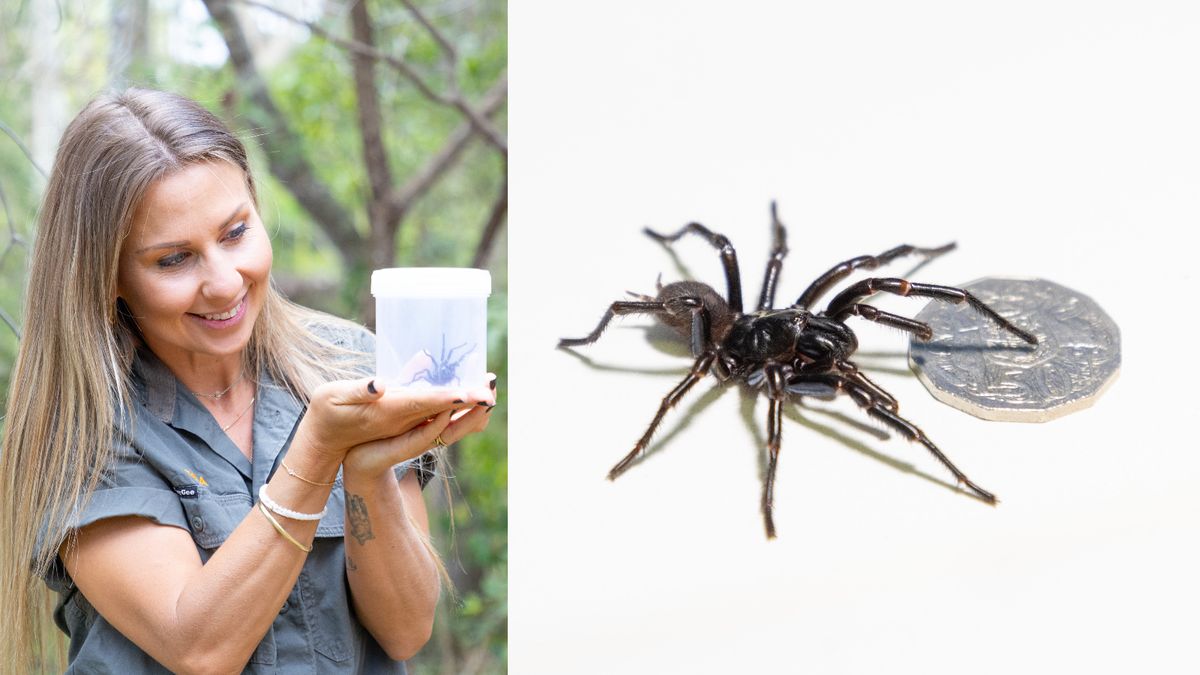
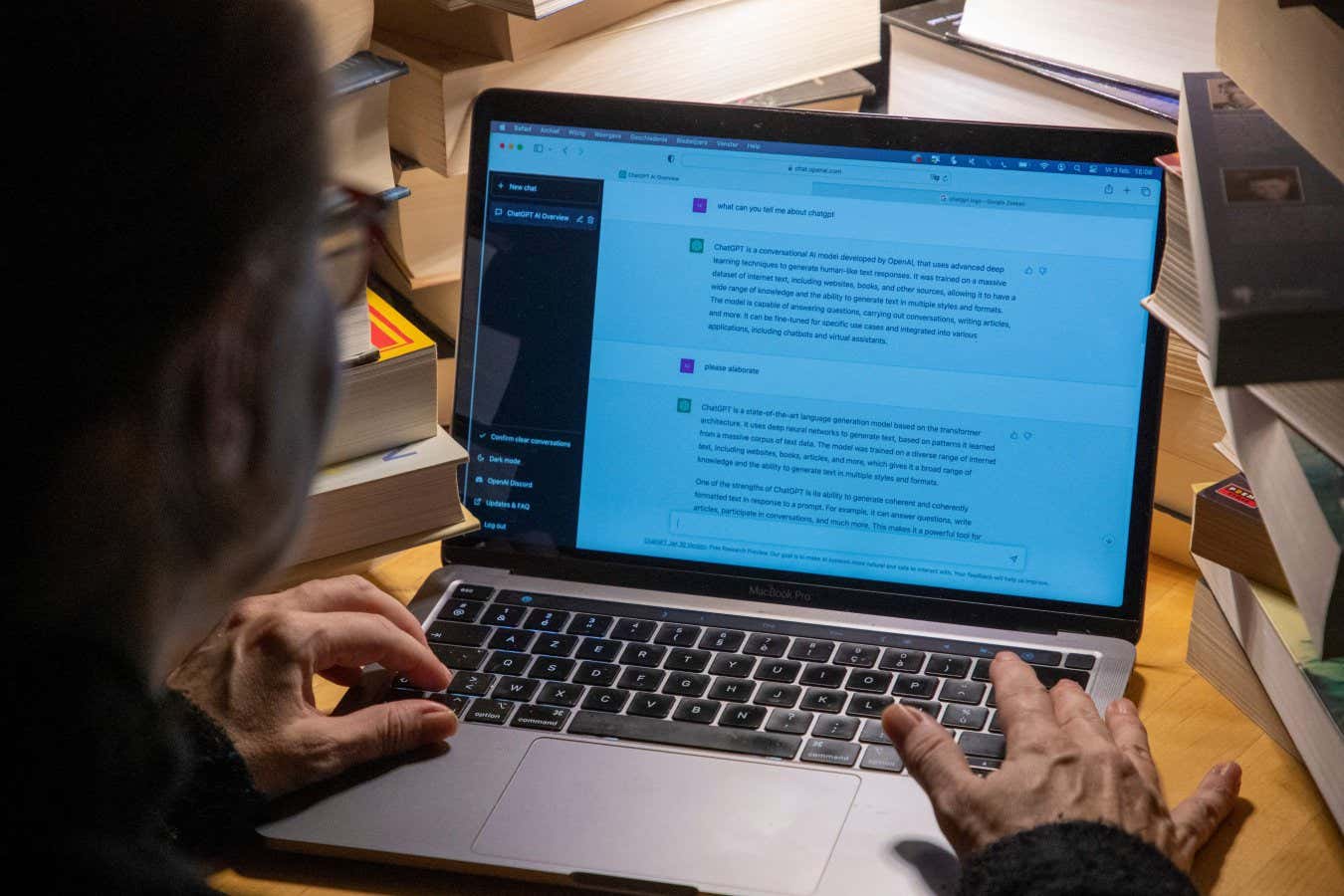
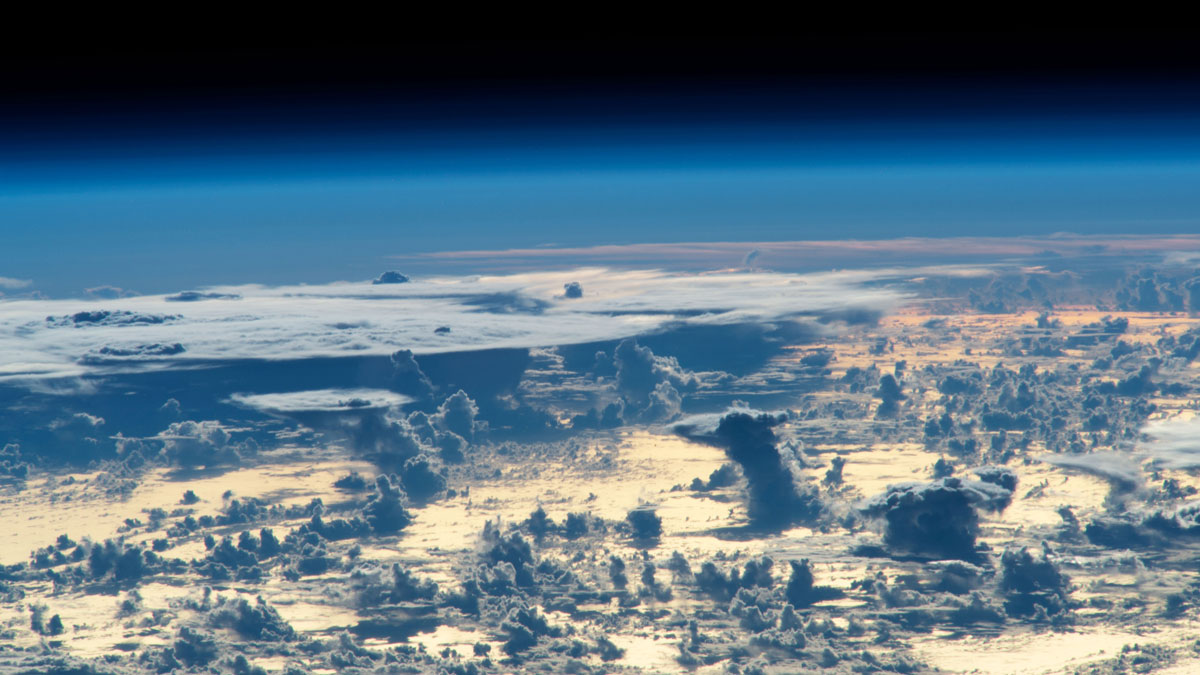

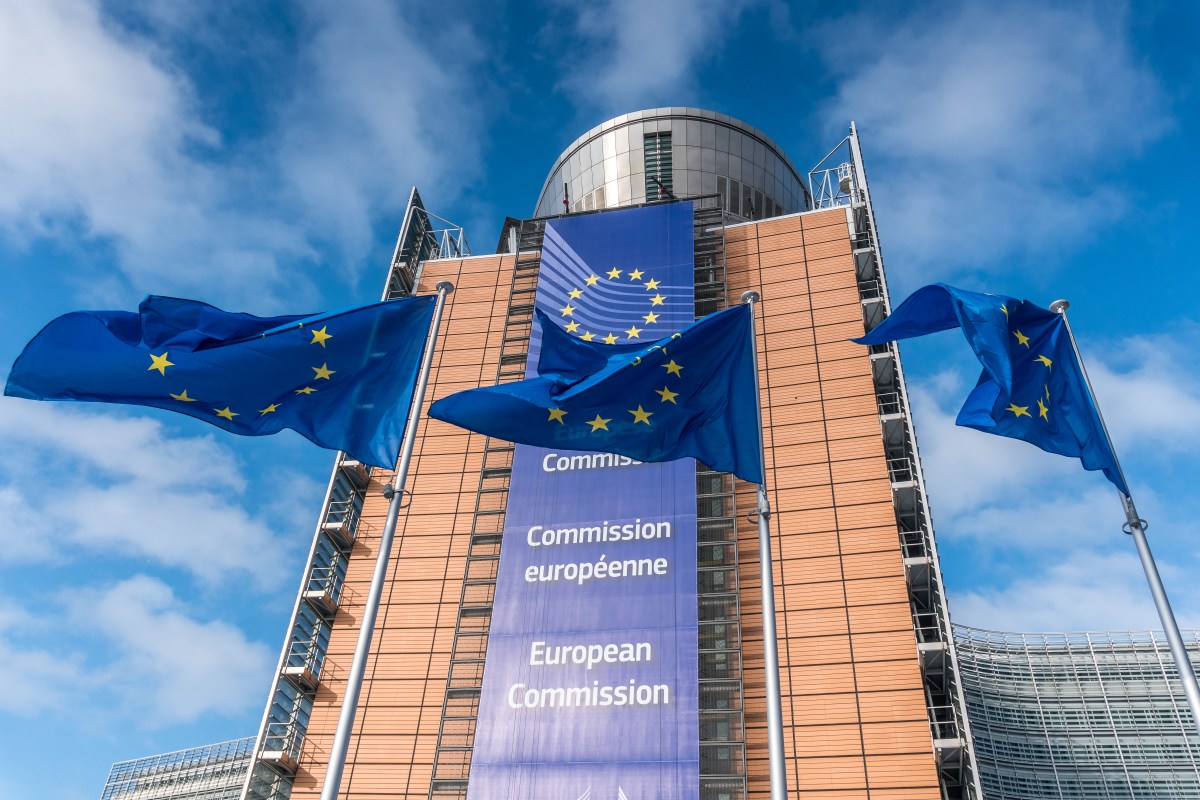
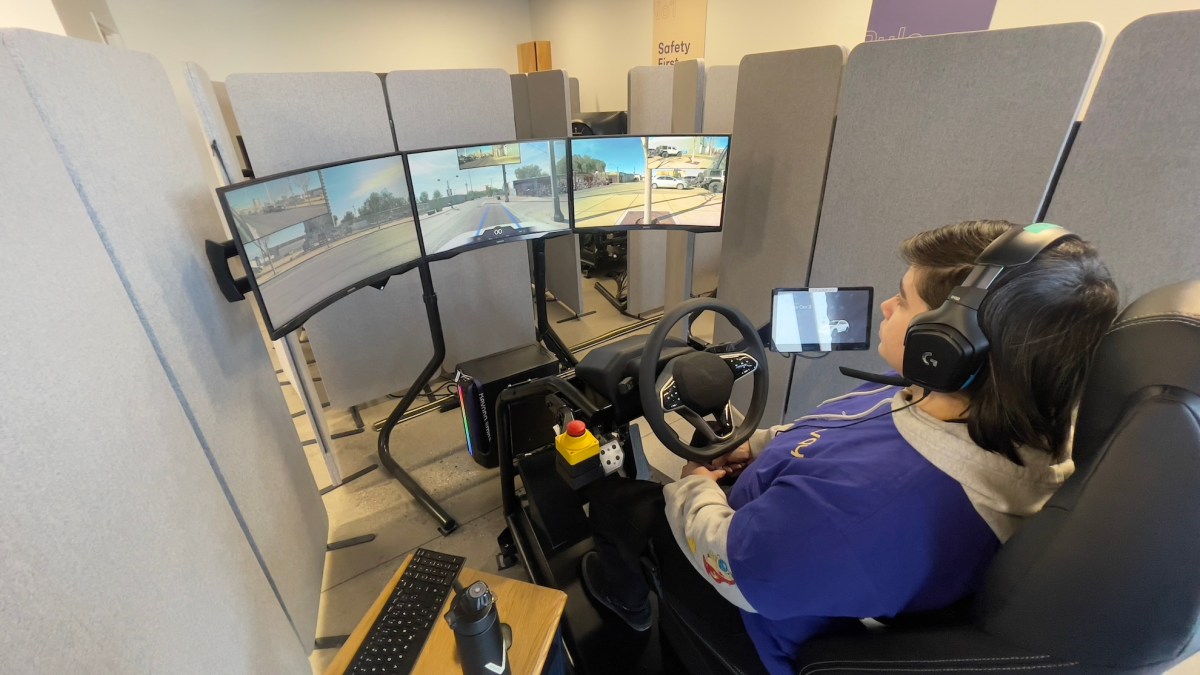
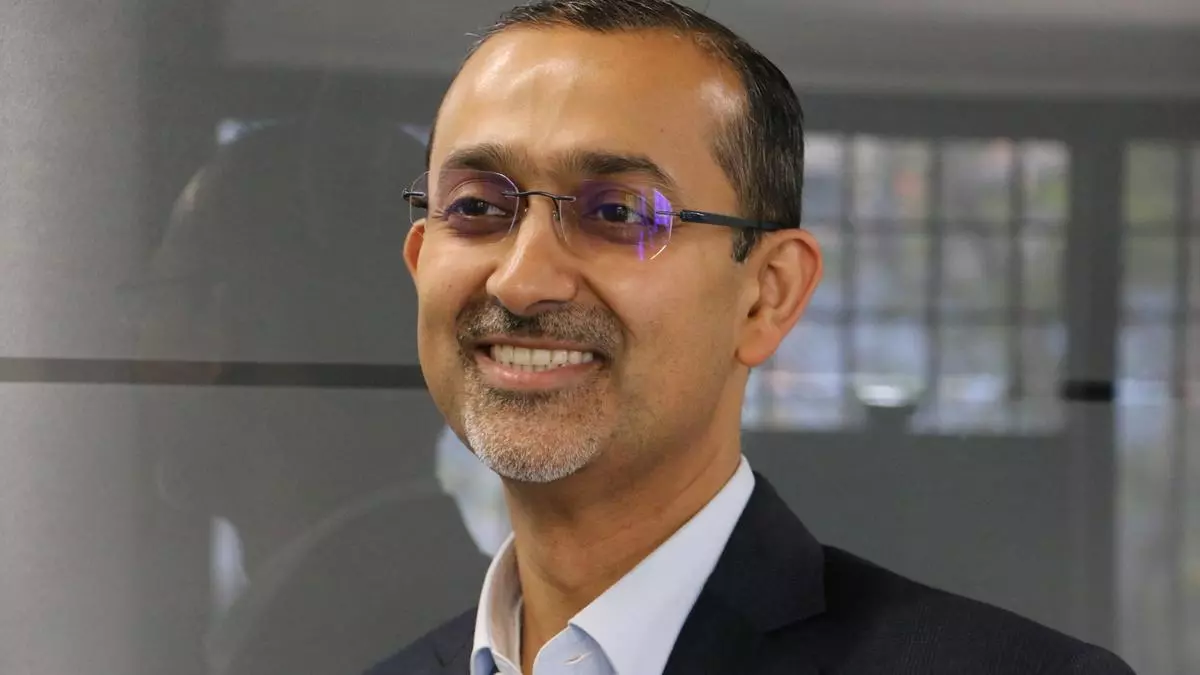
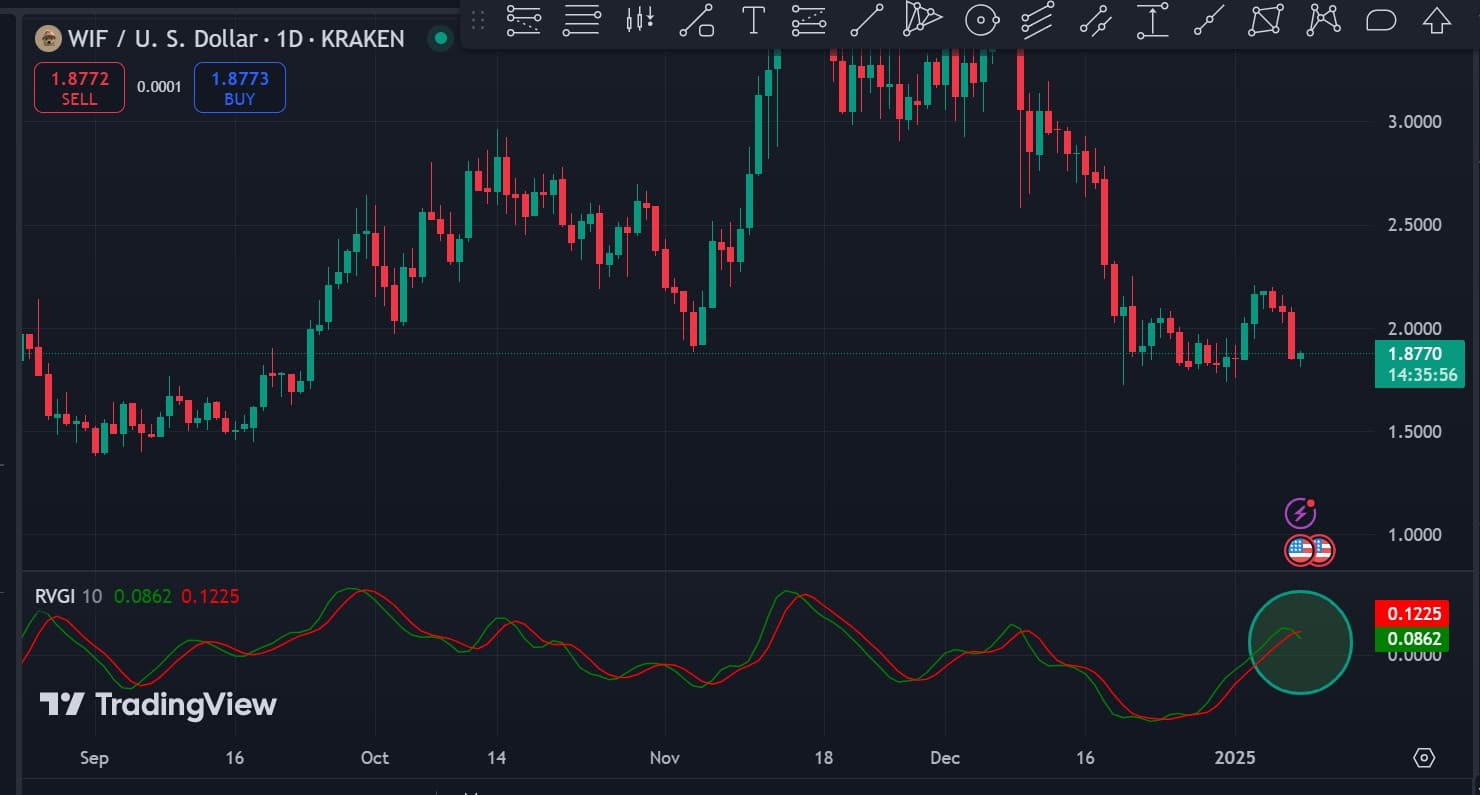

Leave a Comment